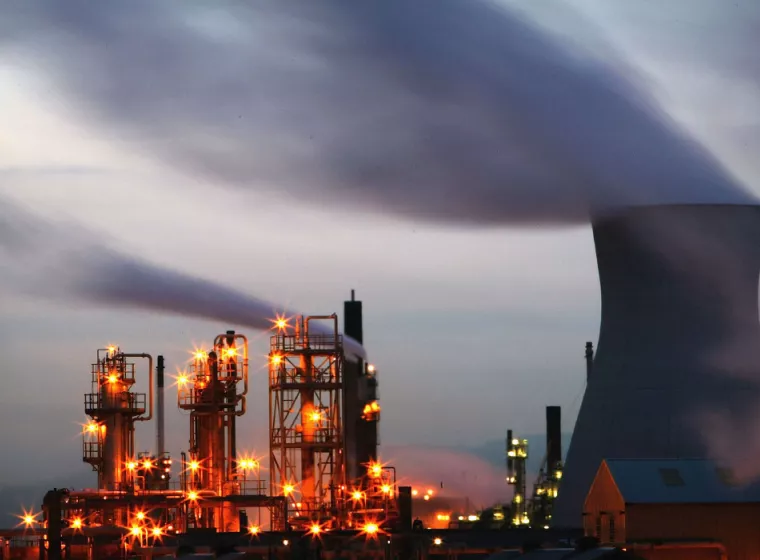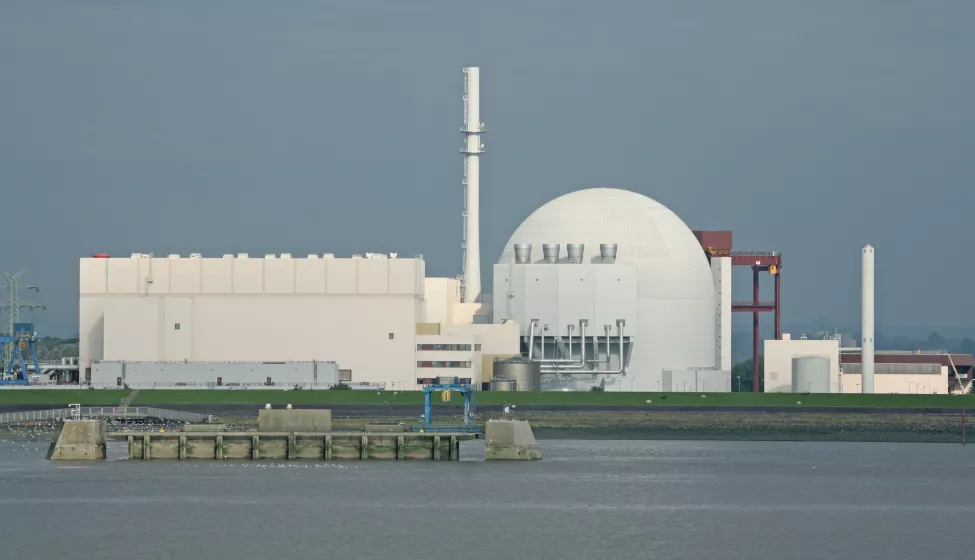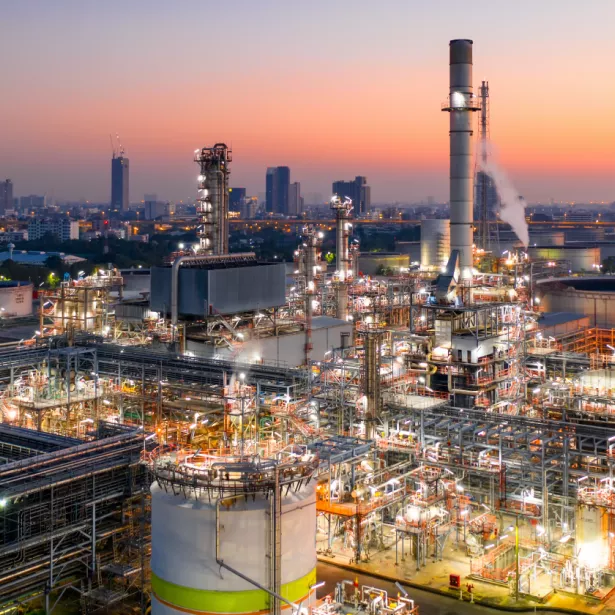June 8, 2023

How advances in nuclear technology and safety could help expand the use of electricity and reduce greenhouse gas emissions
Nuclear power currently provides only about 11% of the world's electricity — a role long constrained by important concerns over costs and safety. However, given updates to existing infrastructure and the development of a new generation of small modular reactors (SMRs), nuclear power could be poised to significantly boost electric energy production while helping countries around the world meet net-zero emissions targets.
Most net-zero goals are underpinned by a commitment to mixed energy sources; electricity, for example, will need to provide approximately 30% more of the final energy consumed than what it currently provides. The technological and safety strides behind nuclear power make it a viable contender for bridging that gap.
SMRs are advanced nuclear reactors with a maximum power output of 300 MW.
SMRs can also be integrated into an electrical grid with other energy sources, including renewables, producing higher efficiencies while increasing grid stability and security. In 2020, over 70 SMR designs were at various phases of development in over a dozen countries around the world — ranging from conceptual, basic, and detailed design plans to manufacturing, under construction, and operational — highlighting that for many utilities, the improved cost and safety benefits of SMRs are worth considering.
Benefits of small modular reactors
SMRs are advanced nuclear reactors with a maximum power output of 300 MW. Smaller in scale and use than their larger predecessors, SMRs offer cost, siting, and safety benefits over conventional nuclear power plants.
SMRs require much smaller footprints, allowing them to be installed where conventional plants would be infeasible. For example, one proposed SMR site would require only about 65 acres compared to more than 3,000 for an existing large-scale plant. SMR components can also be prefabricated and shipped to a site, reducing construction costs and time. Because of lower fuel requirements, SMRs will require refueling every 3 to 7 years versus 1 to 2 years for conventional nuclear plants, driving down long-term operating expenses.
While SMRs are expected to deliver cost and safety advantages over conventional nuclear plants, a diverse set of scientific and engineering disciplines is required for site selection and preparation, manufacturing, and construction.
SMRs also produce lower thermal power at the reactor core compared to larger conventional reactors — a significant safety and security enhancement. As part of the broader advances in nuclear technology, SMRs incorporate passive safety systems too, eliminating the need for human activation. Passive safety systems also reduce reliance on pumps and AC power for accident mitigation because they can dissipate heat even after a loss of power. Digital automation and enhanced human-machine interface (HMI) design are expected to further simplify manual operations, both increasing safety and minimizing the number of operators required for a nuclear plant of any size.
Nuclear safety goes digital
Most nuclear power plants have been in operation for about 30 to 40 years, with an expected operational lifespan up to double that time. To improve safety, many plant owners are now replacing obsolete analog instrumentation and control (I&C) systems with modern digital instrumentation and control (DI&C) systems because they add redundancy without adding complexity. DI&C systems also enable operators to create "smart" applications that upgrade system functionality far beyond legacy analog I&C systems, making them more dependable and less costly to maintain.
A distributed control system (DCS) with DI&C architecture can provide a high level of reliability and availability, significantly reducing the risk of systemwide failure. DCSs provide flexibility in redefining DI&C functions, enabling them to be easily modified to optimize plant performance, automate some previously manual activities, and provide "smart" HMI displays to better inform operators of plant status.
A DCS is also part of a broader "defense-in-depth" IT architecture (subject to IEC62443), which is a platform architecture built on a mesh network topology. The mesh network topology includes multiple interconnected nodes to create a high degree of redundancy for a high degree of safety. If one node goes down, the network can use the others to complete the mesh and prevent a system failure. And separate, redundant input/output modules can assume functionality if a primary component fails.
Challenges for SMR construction
While SMRs are expected to deliver cost and safety advantages over conventional nuclear plants, a diverse set of scientific and engineering disciplines is required for site selection and preparation, manufacturing, and construction. The ecosystem, weather patterns, underlying geology, groundwater table, and seismic activity are all critical factors in site selection and preparation. Each must be examined, analyzed, and addressed effectively, both individually and collectively, to help ensure site suitability, stability, and integrity.
Manufacturing and construction of an SMR plant extends from computer-aided design and manufacturing to on-site installation. Designing, manufacturing, and constructing reactors, turbines, control systems, and containment buildings demands broad expertise in mechanical and structural engineering, materials and corrosion engineering, electrical engineering and computer sciences, civil engineering, and construction management. And these disciplines must be applied cohesively due to the critical interdependence of each in the safe, effective operation of a nuclear power facility.
In addition to scientific and engineering expertise, strategic regulatory planning must be based on a deep understanding of risk management. Both the Nuclear Regulatory Commission (NRC) and the International Atomic Energy Agency (IAEA) make risk-informed decisions about licensing and commissioning new nuclear plants. While the NRC uses the term "Probabilistic Risk Assessment" (PRA) and the IAEA uses "Probabilistic Safety Assessment" (PSA), both are forms of quantitative risk assessment for determining the probability and impact of a range of scenarios, from minor malfunctions to extreme weather or catastrophic seismic activity.
What Can We Help You Solve?
Exponent's multidisciplinary team of experts can help clients navigate the full spectrum of requirements for nuclear power plant design, construction, and maintenance, including site selection and preparation, manufacturing, construction, retrofitting for modernization, and risk assessment and mitigation.

Nuclear Power
Plan for dangerous events with detailed nuclear power plant investigations and risk assessments.

Thermal Sciences Expertise for Energy Systems
Energy systems design, safety, and compliance consulting across a range of industries, including oil and gas, renewable and utility power generation.

Risk Assessment & Mitigation
Experienced in the science of quantifying and managing myriad potential scenarios.




